PM’s working class problem, as Dutton eyes Trump-inspired election pathway
Peter Dutton will mirror the winning strategy of Donald Trump focused on inflation and working class voters, as the Coalition moves to tap Republican strategists to sharpen messaging and ads.
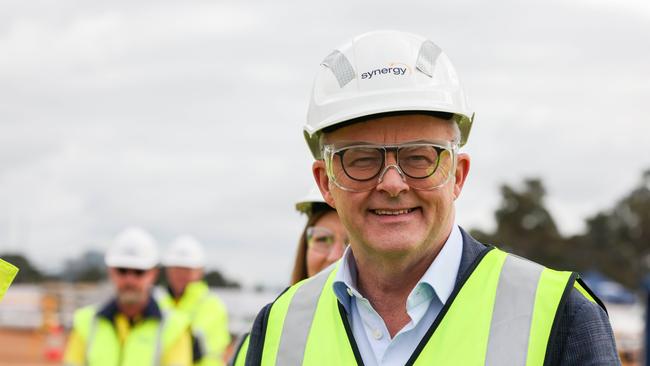
Peter Dutton’s election tactics will mirror the winning strategy of Donald Trump, focusing on inflation, the economy, immigration and disillusioned working-class voters, as the Coalition moves to tap Republican strategists to sharpen campaign messaging and ads.
The Opposition Leader will gear Coalition policies towards presenting a positive, new pathway to prosperity for Australia, contrasting with Anthony Albanese’s broken 2022 election promise that power prices and mortgages would be “cheaper” under Labor.
A key plank of Mr Dutton’s election blueprint will be to attack federal Labor claims that falling inflation is helping families pay their bills and mortgages, and to amplify the complaints of economic pain that working Australians and small business owners are feeling.
Labor’s hold on seats with a high number of tradesmen, technicians, labourers and machine operators has been eroding since Kevin Rudd’s 2007 election victory – and is now in danger of reducing further at next year’s election.
Some ALP insiders fear the Prime Minister has focused too much on the Greens since the Queensland election, and is gearing policies towards picking off a handful of Greens MPs rather than winning target Coalition seats and sandbagging marginal Labor electorates.
In a bid to shore up Middle Australia support, Treasurer Jim Chalmers is expected to unveil new cost-of-living measures ahead of next month’s mid-year budget update that will provide pre-election relief for millions of voters.
The Weekend Australian can reveal the Coalition, which has strong relationships with Republican Party officials, campaigners, pollsters and ad-makers, will seek comprehensive briefings on what worked and didn’t work during the US election campaign.
While Mr Dutton and Coalition strategists acknowledge that US and Australian politics and campaigns are different, the global experience shows the economy and inflation are dominating the minds of voters.
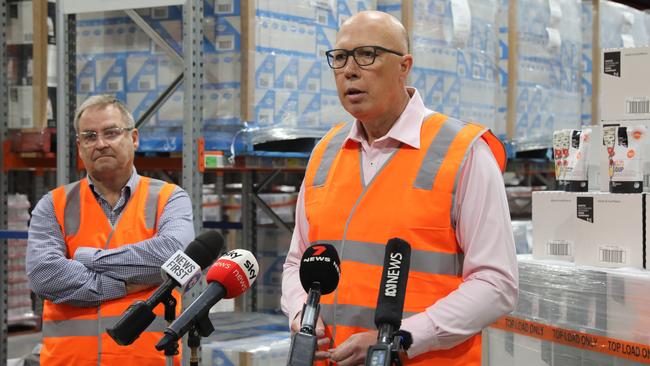
As in Australia, voters in the US are still living with high prices that haven’t come down due to the cumulative impacts of inflation.
Mr Trump on Friday emphasised that immigration and deportations would be his first priorities in office, and announced campaign manager Susie Wiles would be his chief-of-staff, becoming the first woman in US history to hold the post.
As the US president-elect prepares to install MAGA loyalists and China hawks to key cabinet roles, Canberra insiders are warning that Foreign Minister Penny Wong and Defence Minister Richard Marles could struggle to forge strong relationships with their new counterparts.
Sources said the Albanese government’s relationship with the incoming US administration would be tested, amid a more aggressive American posture towards China and the Albanese government’s closer ties with Beijing.
After financial markets this week pushed out predictions of a rate cut in Australia until July, following next year’s federal election, the US Federal Reserve on Friday announced its second rate cut, despite inflation remaining “somewhat elevated”.
Pressure is building on the Albanese government to convince voters that inflation is moderating fast enough, with Australians still being hit with high post-pandemic prices and businesses collapsing in record numbers.
Mr Dutton on Friday repeated a line from his May budget reply speech, based on former Republican president Ronald Regan’s 1980 campaign against Jimmy Carter, in asking Australians: “Are you better off today than you were three years ago?”
Mr Trump successfully seized on voter discontent about the economy and inflation, immigration and threats to domestic jobs and industries to reclaim states with high working-class populations including Pennsylvania, Michigan and Wisconsin. Mr Trump also expanded his support base across outer-suburban, rural and minority voters.
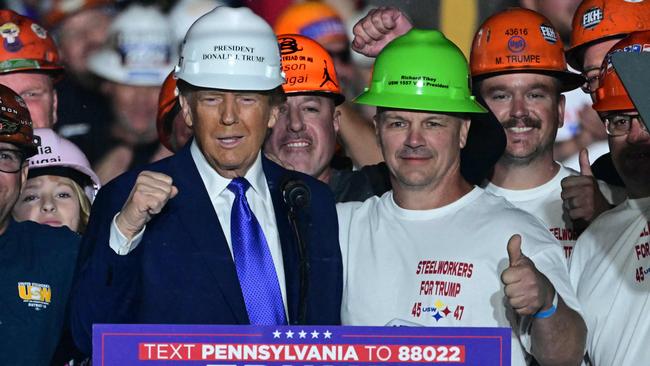
Mr Dutton is ramping up Coalition efforts to woo grumpy voters in traditionally Labor working-class electorates, where support in recent elections for the ALP has eroded as the party moved towards Left-leaning, inner-city focused policies.
Buoyed by electoral trends and backlashes against incumbent governments in the US and Queensland elections, Coalition strategists are increasingly hopeful of winning outer-suburban and regional Labor seats. More than half of the Coalition’s 57 seats – 31 – are in the bottom 40 per cent of electorates ranked by household income, while two of Labor’s three most marginal seats – Lyons and Gilmore – are also two of its three poorest electorates on household income.
Across Australia’s top 30 blue-collar worker seats, the Coalition is targeting ALP-held electorates including Lyons in Tasmania, Paterson and Hunter in NSW, Bruce in Victoria and Blair in Queensland.
When Labor ousted the Howard government in 2007, it won 24 of the 30 seats with the highest percentage of blue-collar workers, census data reveals. The Coalition parties held just five and independent Bob Katter one.
Going into the 2025 election, Labor’s hold on the top 30 “tradie seats” has shrunk to 13, fewer than the Coalition, which has 15 (10 Liberal and five Nationals). The remaining two are held by Mr Katter and independent Dai Le, who took Fowler from Labor in 2022.
With polling and betting markets showing Labor falling behind the Coalition, Mr Dutton is under pressure to present a clear, positive plan showing how the Liberals and Nationals will take the country forward.
The Opposition Leader, who flagged that Labor’s immigration bungles would be a prominent election issue, said: “We’ve got to offer a message of hope. We can manage the economy well. We can get things back on track.
“If you look at the history of our country: there have been good times and bad. We live in the best country in the world and there can always be good times ahead.
“So, we have to make sure that’s the case and we’ll have a tight election coming up, but we are doing well, and we can win it.”
Asked if he believed Australians were interested in US-style populism or hardman leadership, Mr Albanese said the government’s “no one held back, no one left behind” strategy was based on making a “positive difference”.
“We are focused on making sure that we deal with some of the challenges that are there in society, both short term and longer term,” Mr Albanese said.
“In the shorter term, we’ve had a global spike in inflation and we’ve been dealing with ensuring that inflation we have halved, had a 6 in front of it now down to 2.8. We’ve done that whilst we provide cost-of-living relief for people.”
Amid concerns that government spending is keeping inflation higher for longer, Mr Dutton said Labor was telling Australians that “we’re past all of this inflationary period, don’t worry, you’ve never had it so good”.
“I just don’t think that washes because the lived experience, the reality for lots of families sitting around the kitchen tables at the moment is that they’re pulling their hair out and they can’t pay the bills and people are having to sell their homes because they just can’t afford the mortgage repayments,” he said. “I think, as it was in the US, it’s a similar story here: are you better off today than you were three years ago? And I don’t think many people say that they are.”
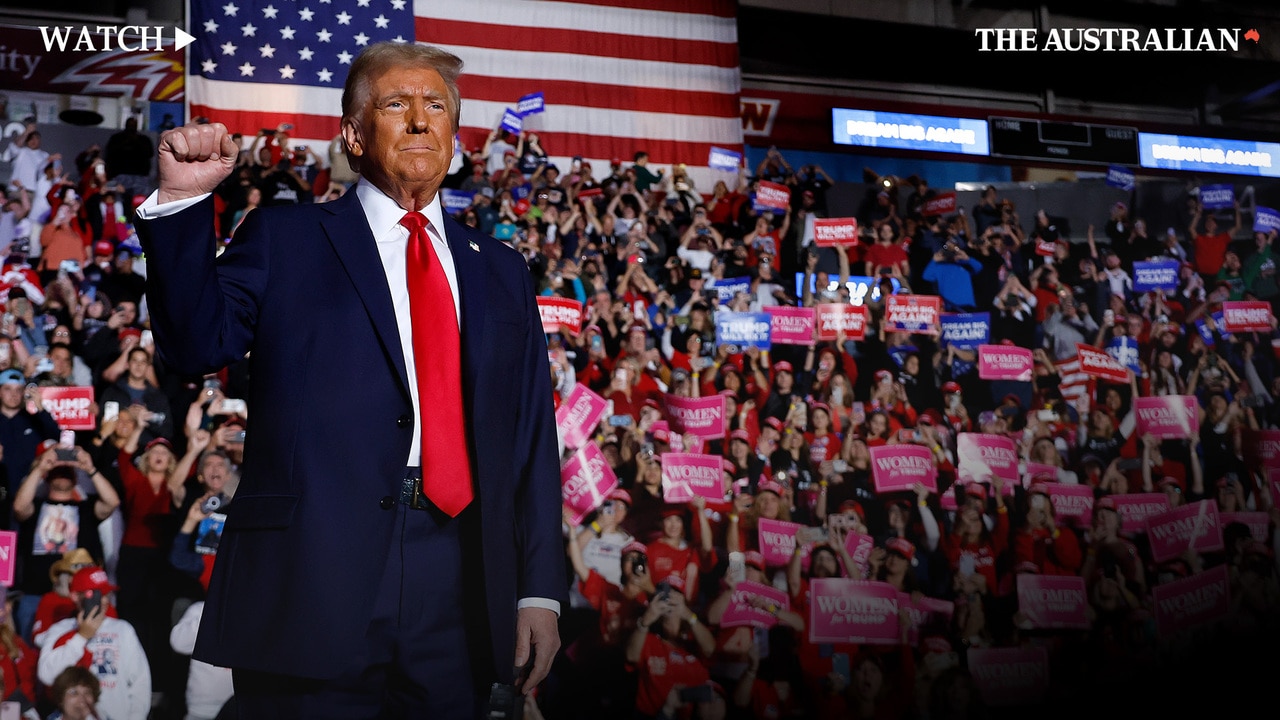
In addition to the blue-collar Labor electorates the Coalition is also targeting regional and outer-suburban ALP seats including Gilmore, Aston, McEwen, Werriwa, Macquarie, Bennelong, Reid, Dobell, Robertson, Parramatta, Corangamite, Tangney, Boothby, Swan, Lingiari and Solomon.
Labor, which is targeting seats including Leichhardt, Longman, Braddon and Fowler, is expected to throw significant resources into inner-city Greens seats including Griffith and Brisbane. Labor, the Liberals and Nationals will fight a three-cornered contest for the new outer-suburban Perth electorate of Bullwinkel.
Demographic and economic forces have dramatically altered Labor’s base. After the 2007 election, Labor held eight of the 30 electorates with the highest median household income. The ALP now holds 14 of the 30 wealthiest seats – despite having fewer seats overall than it did in 2007. Labor seats have been the biggest beneficiaries of rises in median household income since 2007, with 21 of the 25 seats with the largest percentage income increases held by the ALP.
Many tradies have also been pushed out of Labor heartland seats such as Blaxland, Gorton and Whitlam, and into Coalition-held seats including Nicholls, Dawson and Maranoa.

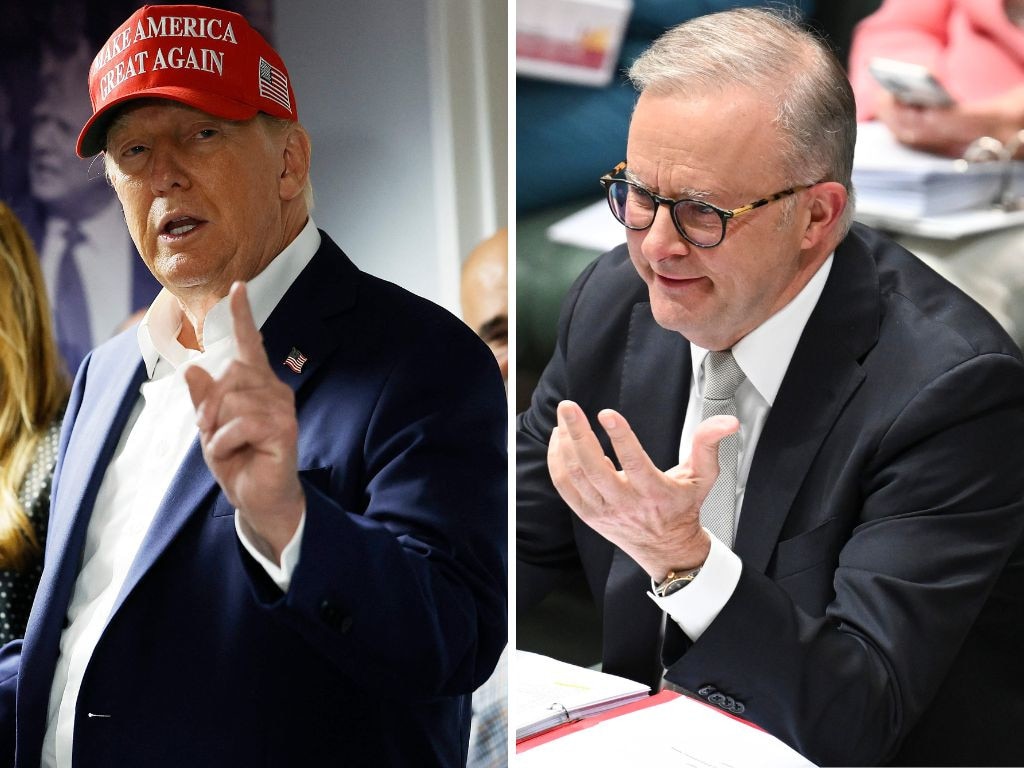




To join the conversation, please log in. Don't have an account? Register
Join the conversation, you are commenting as Logout